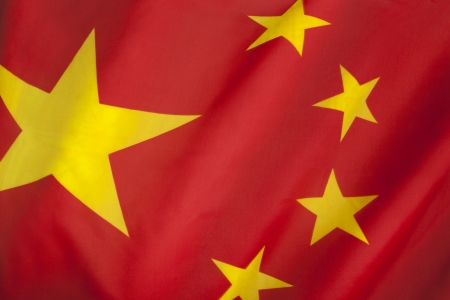 Securing IP rights in China has been a priority for companies selling or manufacturing in China due to the country’s singular attitude to intellectual property, which has been much abused. Today 84.5% of counterfeits originate in either China or Hong Kong, and as the world becomes progressively more connected alongside the rise of e-commerce and cross-border exportation capabilities, increasingly there is a need for IP protection strategies of all companies to be adapted to Chinese policies.
Securing IP rights in China has been a priority for companies selling or manufacturing in China due to the country’s singular attitude to intellectual property, which has been much abused. Today 84.5% of counterfeits originate in either China or Hong Kong, and as the world becomes progressively more connected alongside the rise of e-commerce and cross-border exportation capabilities, increasingly there is a need for IP protection strategies of all companies to be adapted to Chinese policies.
Research indicates that an effective brand protection strategy will amalgamate both preventative and reactive measures to ensure a long-term solution against counterfeiting and other IP infringements. Preventative measures should be employed in order to limit the likelihood of counterfeits and other IP infringements, as well as to enable specified liability in the case of an infringement. Reactive measures respond to an infringement in both online and offline proceedings and provide long-term solutions against identified infringers. Small- and medium-sized companies should also bear in mind useful resources such as the China IPR SME Helpdesk, which aims to respond to IP rights inquiries as well as to provide e-learning, training workshops, and webinars to boost education on IP topics.
Preventative measures
Trademark registration
An initial step to prevent IP infringement is by registering the company trademark in China, in Chinese, before entering China. This step should be completed regardless of whether the company aims to sell inside China, as it protects against ‘trademark squatting’ that occurs because of the first-to-file principle. Trademark squatting, which can stop import and distribution inside China but also export of products manufactured in China, affects companies that may be globally established, but not registered in China. The case of New Balance vs Zhou Lelun serves as a good example of the possible consequences of not registering a trademark in Mandarin.
Be aware that trademark registration in China takes around 12 months to complete, and following this an application to conduct business in China must be filed within 6 months. Additionally, patent, copyright, and design trademarks have different expiration periods, and IP owners should be aware of their level of protection. Trademarks should also be separately registered with Chinese Customs, to prevent counterfeits from leaving China as Customs Officials tend to make seizures based on infringements of the Chinese Customs database.
Product
A simple strategy for protecting IP in China pays attention to the product itself, and its duplicability. Brands that employ effective brand protection strategies often make use of subtle design details and changes, hologram stickers, and unique packaging designs, making counterfeits harder to produce and easier to spot.
Partner-associated risks
To prevent against partner-associated risks, exercise prudence in choosing distributors, agents, suppliers, and manufacturers. Joint venture agreements should be carefully scrutinized if entered into at all, as many Western businesses find themselves stung by agreements that do not allow for control over the company seal, representatives and IP. OEM agreements should impose liability on the manufacturer in the case of infringement, and contractors should sign mold agreements to prevent loss of molds which makes counterfeiting of products all too easy. In addition to this, contracts with Chinese partners should be drawn up with caution, incorporating ‘NNN’ agreements to ensure of non-disclosure, non-use, and non-circumvention policies. Data should be encrypted, and employees with access to sensitive material carefully vetted.
Audits
Regular audits should also be conducted to monitor for and remove any infringements. Online audits can be conducted remotely, and tactics include web searches for ‘product name’ + ‘cheap’ on Google (for rogue sites), major B2C sites known to sell counterfeits as well as Chinese wholesale websites such as 1688 and DHgate. Note that e-commerce IP protection strategies are being circumvented by use of ‘cover’ keywords for brands, generic unbranded keywords, Chinese translations, and misspellings.
Social media sites, too, are potentially problematic for IP infringement in offering below the radar e-commerce. In India, Whatsapp is increasingly used for sales and in China, sites, and apps such as WeChat, Weibo and Yupoo are being used to sell counterfeits. The latter, an image-sharing site, is frequently used in cooperation with B2C site Aliexpress; posted Yupoo images of counterfeit items are accompanied by Aliexpress listings that appear to be selling generic, unbranded products.
Offline audits, including monitoring for infringement at manufacturing companies and trade fairs, may also prove effective. Trade fairs such as world-famous Canton Fair sell items of all categories wholesale, and counterfeit items are likely rampant because trade fairs are rarely attended with a view of enforcing IP. The Art Copyright Coalition, a group formed of six small art publishing companies, have taken to attending the Canton and Jinhan fairs annually to spot and report products that infringe on their shared IP, using formal documentation of ownership to implement removal.
Trade fairs enjoy high sales and international clients; in the Spring 2017 fair, almost half of all visitors were from countries outside of Asia. Because of this, any infringing products sold wholesale are not limited to Chinese markets and can threaten international business for IP owners. Some fairs, such as the Canton Fair, have official IP complaint centers, but for many others infringements will need to be reported to the organizer, providing proof that the IP in question is registered in China.
Reactive measures
A response to IP infringement should be rapid, and where possible aided by legal professionals. Dependent on the type of infringement and the infringer, reactive measures will see the majority of work either online or offline, but successful measures often employ a combination.
Offline
The China Patent & Trademark Office (CTMO) will carry out certain actions to protect against trademark squatting. Opposition applications must be filed within three months of the trademark publication date, but trademarks can also be canceled and invalidated in certain circumstances. Non-use cancellations cancel trademarks that are evidenced to be out of use for three years, while invalidation cancels trademarks registered in ‘bad faith’, such as trademarks registered without an intention of use, deceptive means or improper used to register and translation of a well-known mark registered inside of or outside of China.
Customs block exports of any counterfeited or otherwise IP-infringing goods. They can be specially trained to identify counterfeits, and IP can be specifically registered with Customs to increase the likelihood of seizures. Following seizure goods will either be donated to charity (where the offending mark can be removed) or destroyed. Be aware that the IP owner is responsible for costs incurred by storing and destroying seized goods. Raids can also be carried out on suspected or confirmed infringers and manufacturing or distribution locations, in order to seize and destroy goods as well as penalize the infringer.
Legal action may prove effective in some cases. For civil litigation, investigations should be carried out and evidence collected in order to build a detailed case against infringers. Criminal procedures may be appropriate depending on the value of infringing goods. Outside of court, complaints can be filed with the Intellectual Property Administration, the Administration for Industry and Commerce, and the Administration for Copyrights, which work to penalize infringers.
Offline-to-online
Through raids, customs seizures and other investigative measures it may be possible to analyze distribution channels, which will often take place online. By gathering information about the company’s online presence, through social media searches, search engines and reverse whois lookups, key individuals in counterfeit operations may be identified so as to target legal measures and implement a long-term solution against counterfeiting.
Online
Before entering online reactive measures, it may be appropriate to first seek legal advice. Formal Cease & Desist letters provide legal requests to sellers, marketplaces, and administrators of websites or social media platforms. This solution is more costly than most actions by IP owners against offenders but may prove more effective in practice.
Take-downs and reporting procedures from e-commerce websites and social media sites take varying amounts of time, and most major sites have specific documentation that allows for multiple reports of infringement. Be aware that Taobao and other Chinese websites will usually require Chinese IP registrations to remove infringements, and EU IP registrations or Madrid trademark registrations will not be accepted for domestic sales.
Online-to-offline
In cases of multiple infringements, rather than reporting individual listings a longer-term solution will be to build a case against sellers. Work to identify online top offenders by checking for high stock numbers, especially low prices, high traffic or customer engagement and sales over multiple channels. Investigation may provide intelligence on any factories used or owned by the infringer, details on executive individuals and insight into how the company operates, which will aid a legal case to as well as the adaptation of existing brand protection strategies which can be revised in accordance with specifics of the counterfeiting process.

![[IPWatchdog Logo]](https://ipwatchdog.com/wp-content/themes/IPWatchdog%20-%202023/assets/images/temp/logo-small@2x.png)

![[Advertisement]](https://ipwatchdog.com/wp-content/uploads/2024/04/Patent-Litigation-Masters-2024-sidebar-700x500-1.jpg)

![[Advertisement]](https://ipwatchdog.com/wp-content/uploads/2021/12/WEBINAR-336-x-280-px.png)
![[Advertisement]](https://ipwatchdog.com/wp-content/uploads/2021/12/2021-Patent-Practice-on-Demand-recorded-Feb-2021-336-x-280.jpg)
![[Advertisement]](https://ipwatchdog.com/wp-content/uploads/2021/12/Ad-4-The-Invent-Patent-System™.png)






Join the Discussion
No comments yet.